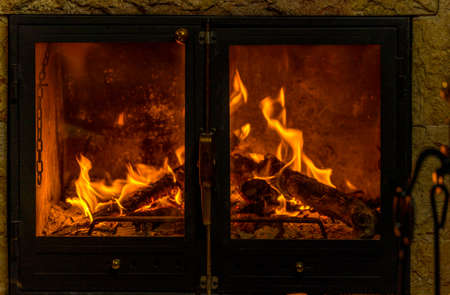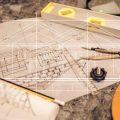Understanding Victorian and Edwardian Fireplaces
Victorian and Edwardian fireplaces are defining features in many UK period properties, each reflecting the craftsmanship and social values of their respective eras. The Victorian period, spanning from 1837 to 1901, saw fireplaces as both practical heating solutions and ornate centrepieces, often adorned with intricate cast iron inserts, decorative tiles, and wooden or marble mantels. Design elements typically included floral motifs, geometric patterns, and classical influences. In contrast, Edwardian fireplaces (1901–1910) embraced lighter aesthetics with less ornamentation, favouring elegant simplicity, pastel-coloured tiles, and softer lines to complement the airier architecture of the time. Historically, these fireplaces served not just as heat sources but as focal points around which families gathered. Materials commonly used include cast iron for the firebacks and grates, colourful glazed tiles for decoration, and timber or stone for the surrounds. Understanding these features is vital when planning any restoration work, as preserving original materials and details upholds the historical integrity and character of UK heritage homes.
Common Challenges in Fireplace Restoration
Restoring Victorian and Edwardian fireplaces in UK properties presents a unique set of challenges, many rooted in the passage of time and evolving safety standards. Understanding these issues is essential for any successful restoration project.
Structural Damage and Wear
Over decades, fireplace structures can suffer from a variety of physical problems. Brickwork may become unstable, cast iron inserts can crack, and surrounds might loosen due to shifting building foundations or years of use. Addressing these concerns requires careful assessment by specialists who understand traditional construction methods.
Missing or Damaged Tiles
Decorative tiles are often a hallmark of period fireplaces, especially in Edwardian homes. Unfortunately, tiles are prone to cracking, chipping, or going missing altogether. Finding suitable replacements that match original patterns and glazes can be challenging and may necessitate sourcing from specialist reclamation yards or commissioning bespoke reproductions.
Soot Buildup and Internal Blockages
Years of use without modern cleaning techniques result in significant soot accumulation inside the chimney and firebox. This not only affects the fireplace’s appearance but also poses ventilation hazards. Professional chimney sweeping and sometimes minor dismantling are required to fully address internal blockages and restore functionality.
Meeting Modern Safety Requirements
Heritage fireplaces were not designed with current safety regulations in mind. Open fires need adequate ventilation, hearth sizes may not comply with today’s standards, and the materials used must withstand higher temperatures if the fireplace is to be used regularly. Ensuring compliance often involves discreetly integrating fireproof materials or modifying flue systems while preserving period aesthetics.
Summary of Common Challenges
| Challenge | Description | Typical Solutions |
|---|---|---|
| Structural Damage | Cracked or unstable brickwork; loose surrounds | Professional assessment; structural repairs using traditional methods |
| Missing/Damaged Tiles | Loss or damage to decorative tiles | Sourcing reclaimed or reproduction tiles; professional tile fitting |
| Soot Buildup | Accumulation inside chimney/firebox; reduced efficiency | Specialist cleaning; chimney sweeping; inspection for blockages |
| Modern Safety Compliance | Lack of fireproof materials; non-compliant dimensions | Addition of fireproof linings; adjustment to meet regulations |
Tackling these common issues with care and expertise ensures that restored Victorian and Edwardian fireplaces remain both beautiful features and safe sources of warmth within UK homes.

3. Sourcing Authentic Materials and Reproduction Parts
When restoring Victorian and Edwardian fireplaces in UK properties, sourcing authentic materials and reproduction parts is both an art and a science. The character of these period features depends heavily on the use of genuine or sympathetically reproduced components, so it’s crucial to know where to look and what to look for.
Locating Original Fireplace Components
Original tiles, mantels, surrounds, grates, and inserts can often be found in specialised salvage yards across the UK. Notable examples include Lassco in London, Architectural Salvage in Manchester, and The Old Yard in Yorkshire. These establishments typically stock items rescued from period demolitions or renovations, providing access to historically accurate pieces that match your property’s era.
Reputable Salvage Yards
When visiting salvage yards, it’s advisable to bring detailed photographs or measurements of your fireplace to ensure compatibility. Many reputable dealers will also offer restoration advice and may even help source specific missing parts. Always enquire about provenance to ensure authenticity—genuine Victorian or Edwardian items should display age-appropriate patina and craftsmanship.
Quality Reproduction Suppliers
If original components are unavailable or prohibitively expensive, high-quality reproduction suppliers are an excellent alternative. Companies such as Chesneys, Cast Fireplaces, and The Victorian Emporium specialise in crafting faithful reproductions using traditional techniques and materials. These suppliers can provide everything from decorative tiles to cast iron inserts, all tailored to maintain the historical integrity of your home while meeting modern safety standards.
By combining resources from trusted salvage yards with reputable reproduction manufacturers, you can achieve a fireplace restoration that honours the architectural heritage of your Victorian or Edwardian property while ensuring longevity and functionality.
4. Best Practices for Conservation and Repair
Restoring Victorian and Edwardian fireplaces in UK homes requires a careful balance of traditional craftsmanship, respect for heritage, and compliance with current conservation standards. Below are recommended techniques and considerations to ensure the historical integrity of these architectural features is preserved.
Recommended Techniques for Cleaning
When cleaning period fireplaces, it is vital to use methods that are both gentle and effective, avoiding harsh chemicals that could damage delicate tiles or cast iron. The following table summarises appropriate cleaning approaches:
| Material | Recommended Cleaning Method | Considerations |
|---|---|---|
| Cast Iron | Mild soap solution, soft brush | Avoid abrasive pads; dry thoroughly to prevent rust |
| Ceramic Tiles | Damp cloth, pH-neutral cleaner | Do not soak; avoid acidic products that may erode glaze |
| Marble/Stone Surrounds | Mild detergent, warm water | No bleach; test cleaner on inconspicuous area first |
Repairing Historic Fireplaces
Repairs should always aim to retain as much original material as possible. When replacement is necessary, source reclaimed or reproduction components that match the existing style and period. Key points include:
- Tiling: Where tiles are cracked or missing, seek out salvage yards or specialist suppliers offering authentic replacements.
- Ironwork: Address minor rust with wire wool followed by black lead polish; consult a metals conservator for structural repairs.
- Mantels and Surrounds: Fill small chips in marble with colour-matched epoxy; larger losses may require professional stone restoration.
Preservation and Long-term Care
Maintaining the condition of restored fireplaces involves regular inspection and prompt attention to any signs of deterioration. Adhering to UK conservation guidelines—such as those from Historic England—is essential for listed properties. Best practices include:
- Documentation: Keep detailed records of all interventions and materials used.
- Ventilation: Ensure flues remain clear to prevent damp and soot build-up.
- Sensitive Upgrades: If adapting the fireplace for modern use (e.g., gas inserts), choose reversible modifications that do not damage historic fabric.
- Liaison with Authorities: For listed buildings, obtain consent from local planning officers before undertaking significant alterations.
Summary Table: Conservation Do’s and Don’ts
| Do’s | Don’ts |
|---|---|
| Use traditional materials where possible Consult conservation experts Retain original features whenever feasible |
Avoid irreversible changes Refrain from sandblasting or harsh chemicals Never discard historic components unnecessarily |
Final Thought on Responsible Restoration
The essence of restoring Victorian and Edwardian fireplaces lies in respecting their story while making them fit for contemporary living. By following established conservation best practices, UK homeowners can ensure these treasures endure for generations without sacrificing their historic character.
5. Balancing Traditional Styles with Modern Comfort
Restoring Victorian and Edwardian fireplaces in UK properties often presents the challenge of maintaining period authenticity while meeting modern standards of comfort, efficiency, and safety. Achieving this delicate balance calls for thoughtful planning and a careful selection of restoration techniques.
Discreet Efficiency Upgrades
Upgrading a historic fireplace does not have to detract from its original charm. One effective approach is to install high-efficiency inserts or bespoke gas fires that are designed to mimic the look of a traditional open hearth. Modern manufacturers offer slimline models with cast iron or decorative tile surrounds, blending seamlessly into period interiors without altering the architectural integrity.
Improved Draught Control
Many Victorian and Edwardian fireplaces were constructed before the advent of central heating and can be draughty by today’s standards. Fitting discreet chimney balloons or removable draught excluders behind the fireplace opening can significantly improve energy efficiency while remaining out of sight. For those wishing to retain occasional use, these upgrades are easily reversible and cause no permanent alteration.
Enhancing Safety Without Compromise
Safety is paramount, particularly in older properties where flues may be degraded or chimney linings inadequate for modern fuel types. Installing a stainless steel flue liner is a common solution that remains hidden within the chimney stack, ensuring safe operation while preserving external appearances. Additionally, unobtrusive carbon monoxide detectors and fire guards crafted in period-appropriate styles can offer peace of mind without clashing with heritage aesthetics.
Subtle Lighting Solutions
To evoke the warm ambience typical of Victorian and Edwardian parlours, consider integrating subtle LED uplighting within the fireplace recess or using battery-operated faux candles on the mantelpiece. These modern lighting solutions create atmosphere without risking damage to historic materials or disrupting the overall style.
The key to successful integration lies in selecting upgrades that complement rather than compete with period features. By prioritising reversibility and visual harmony, homeowners can enjoy both the beauty of their restored fireplaces and the benefits of contemporary living standards.
6. Working with Heritage Professionals
Restoring Victorian and Edwardian fireplaces in the UK is not just a matter of craftsmanship; it also requires navigating complex heritage regulations. Knowing when to engage heritage professionals can make all the difference in ensuring your restoration is both beautiful and legally compliant.
When to Consult Listed-Building Specialists
If your property is listed or located within a conservation area, always consult a listed-building specialist before undertaking any work on original fireplaces. These experts can provide guidance on what is permissible under UK law and help you prepare necessary documentation for planning permission or listed building consent. Early involvement of a specialist helps avoid costly mistakes and ensures your restoration respects the architectural integrity of your home.
Liaising with Local Authorities
Your local council’s conservation officer should be informed about any proposed alterations to period fireplaces, especially if structural changes are involved. These officers offer invaluable advice on best practices and legal requirements, helping you stay compliant with planning and conservation laws. Building a good relationship with your local authority can streamline the approval process and reduce delays.
Engaging Certified Tradespeople
Always hire tradespeople who are experienced in working with historic properties and who hold relevant accreditations, such as membership of the Guild of Master Craftsmen or HETAS certification for fireplace installations. Certified professionals understand the nuances of traditional materials and methods, ensuring that restoration work meets modern safety standards while preserving historic character.
Best Practice: Documentation and Communication
Keep thorough records of all consultations, permissions, and work undertaken. Clear communication between homeowners, specialists, tradespeople, and local authorities fosters transparency and ensures everyone is aligned throughout the project.
Summary
Collaborating with heritage professionals is essential for restoring Victorian and Edwardian fireplaces in line with UK regulations. Their expertise helps protect your property’s legacy while ensuring compliance, making them valuable partners in any period restoration project.

